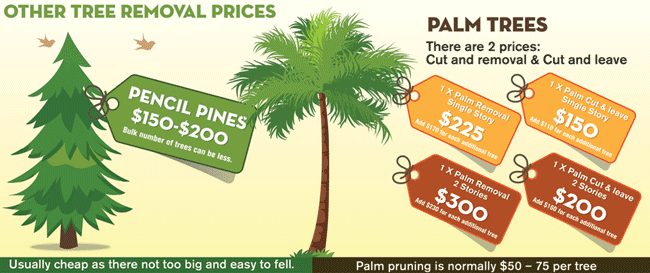Identifying The Requirement For Tree Removal: A Guide For Homeowners
Identifying The Requirement For Tree Removal: A Guide For Homeowners
Blog Article
https://howtokilla83827.jaiblogs.com/56295487/reliable-tips-for-a-seamless-tree-elimination-experience Composed By-Wright Crowder
Trees include appeal and worth to home, however they can also position a danger during extreme weather condition occasions. If a tree has actually stopped expanding, is showing visible fungal growth, or has a leaning trunk, it ought to be gotten rid of by an expert to prevent home damages and injury.
To learn more, participate in a homeowner source reasonable co-hosted by HPD, the Center for NYC Neighborhoods, and Brooklyn-based real estate partners this night in Bedford-Stuyvesant. The event will include the Homeowner Manual, a new guide to aid home owners navigate the responsibilities of owning a home.
1. Dead or Dying Branches
Trees are an integral part of your home's landscape, providing color and appeal. https://www.sfchronicle.com/california-wildfires/article/Radical-tree-trimming-Critics-say-PG-E-s-14305225.php supply shelter for wildlife and generate oxygen, yet also healthy and balanced trees can experience health problems that may necessitate their removal. Dead or dying trees aren't simply unattractive, they can be unsafe. https://howdoyoukillatreestump39506.blog-a-story.com/9422828/safeguarding-your-landscape-replanting-after-tree-removal can fall during a storm, bring about costly building damage and injuries.
When a tree's branches start to die, it suggests that its structure is beginning to break down. If most of its branches are dead, it is likely time to remove it.
Search for a lack of brand-new development, bark peeling, open injuries or tooth cavities, fungi growing on the trunk or origins and a basic look of decay in the entire canopy. These indicators of infection can suggest a severe trouble that will need expert tree services to fix.
2. Leaning Trunk
While it's typical for trees to lean every so often because of phototropism, if a tree has a hazardous or serious lean that's not because of natural processes - it could be an indicator that the tree needs to be removed. If the tree is leaning toward a high-voltage line, home, automobile, play structure or any other area that could be hazardous to people if it falls, after that calling an expert tree service for elimination ought to be a leading concern.
It's also important to watch for any kind of sudden changes in a tree's leaning as it can show damage to the origins or trunk that may result in dropping. This is especially true during thundercloud, given that high winds and rain-soaked dirt can cause a lean to alter quickly. Regular tracking, particularly during and after storms can help homeowners acknowledge possible troubles with their trees so they can call an arborist for a complete evaluation.
3. Pest Problem
Some pest problems, such as wood-boring bugs like emerald ash borer or sap-suckers like scale bugs, are so extreme that they can trigger a tree to die. The very best way to avoid pest infestation is to monitor your trees on a regular basis. Look for places, openings, or stainings in the leaves and bark. Take work growth at the trunk for splits and indications of insect damages, such as passages or tracks.
If a tree comes to be as well infested with bugs, or is close to a home or power lines, an arborist might recommend elimination. If a leaning tree establishes a new, unsteady lean, an arborist will likely advise removal also to ensure the safety of people and residential or commercial property. If a weakened or dead tree constantly drops extreme branches, it is an indicator that it is time to get rid of the tree. If a tree continues to lose branches for an extensive period of time, it could lead to structural troubles and possible building damage.
4. Damaged Trunk
Trees are a lovely and integral part of our landscape, but they do require routine like maintain them healthy and risk-free. If a tree is harmed irreparable it is likely time for it to come down.
Seek indications of damages to the trunk, including vertical fractures, seams, dead branch stubs, noticeable wounds or open dental caries and extreme tree-rot. The existence of fungi at the base of the trunk is another alerting indicator. Fungis might suggest that the phloem and xylem (life-support tissues) are compromised, allowing for the spread of disease or a future failing.
Also, take into consideration whether the tree has quit expanding. Healthy and balanced trees will have brand-new development annually, which might show up as buds or branches sprouting and extending. If you don't see any kind of brand-new growth, it's a good idea to have an arborist assess the tree and follow their recommendation for elimination. A dying or damaged tree can fall and cause residential or commercial property damages.